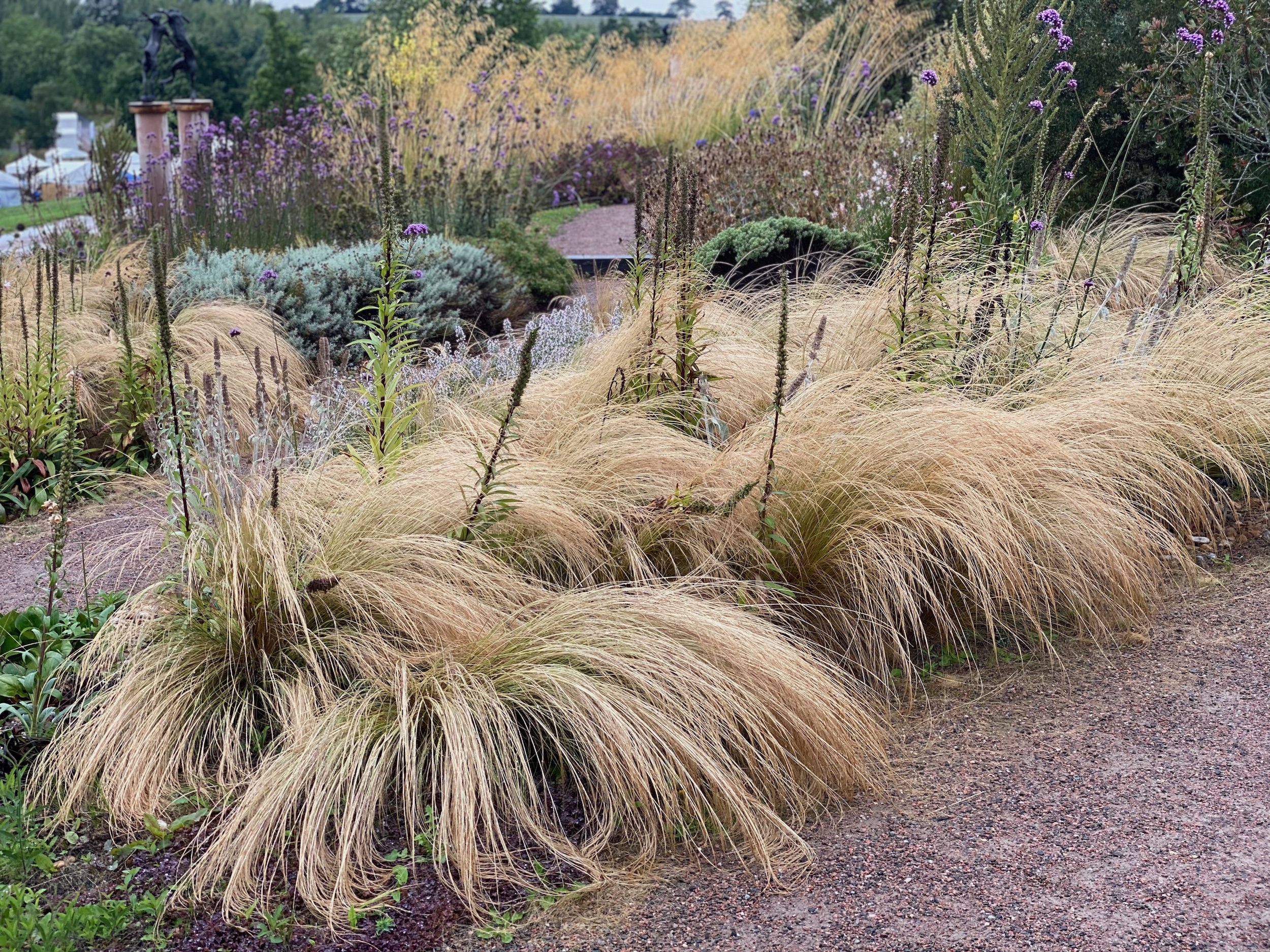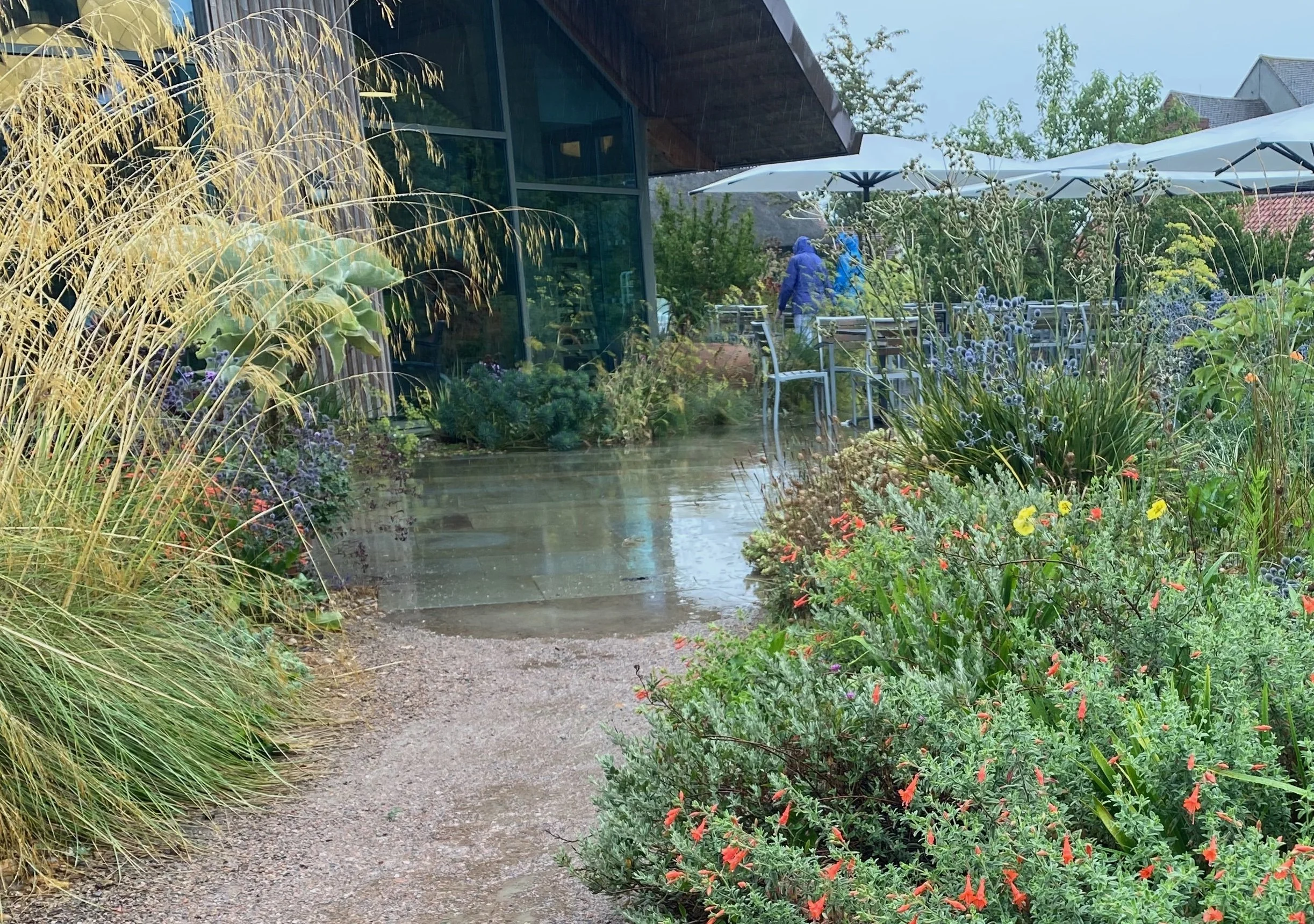The Dry Garden at Hyde Hall
When Marden Horticultural Society planned a visit to RHS Hyde Hall in Essex this August (2023), I knew it was a must-see if only for its famous Dry Garden. After the drought of 2022, plants that can tolerate dry conditions have been at the top of my shopping list. In typical British weather fashion, when the day came it rained more or less the whole day!
Sited on a south-facing slope overlooking the rest of the gardens, it is constructed of coarse-grained gabbro boulders and subsoil mounded over rubble. The topsoil was mixed with a high volume of sand and grit to provide the plants with a free-draining environment. More than 400 species of plants live in the Dry Garden, all originating from areas of low summer rainfall, including the Mediterranean, South Africa, South America, Australia and California. The garden has never been watered artificially and the 8,000 drought tolerant plants in this garden have flourished.
Interspersed with winding paths and dotted with wildlife sculptures, the garden provides interesting vistas and dramatic planting combinations. Textured grasses mingle with clouds of Gaura and Verbena Bonariensis giving a contrast against the cool grey glacial rocks dotted around the area.










Many of the species were the usual suspects for a dry garden: eryngium, stipa, agapanthus, phormium, santolina, erigeron, lychnis, perovskia, echinops, crambe, aeonium and euphorbia. However, there were some surprises for me with ceratostigmas, verbascums, valerian, bergenias, fennel and asters in the mix. As well as, I must confess, many more plants I didn’t recognise. Of course it would have looked better on a sunny day, but it stood up really well to the rain and because of the architectural nature of the planting, I think it would look equally great throughout the year. The Dry Garden was as inspiring as I had hoped.
Of course our Marden clay soil would need a bit of tweaking to replicate the same conditions. This is what the the RHS advises:
Mediterranean-style planting tolerates a degree of cold but will sulk in wet soil, particularly in winter. If you have clay soil, add coarse grit and sharp sand so that your soil replicates the natural growing environment of these plants. Avoid mixing in lots of organic matter as these plants are used to poor, stony soils and the organic matter absorbs moisture.
With that advice and a head full of ideas, it was time to head for the cafe…

